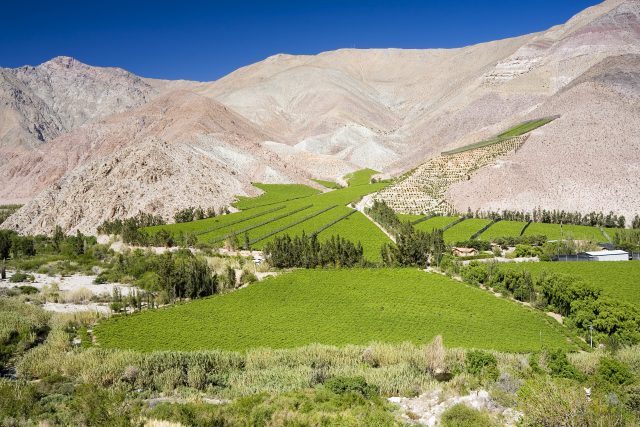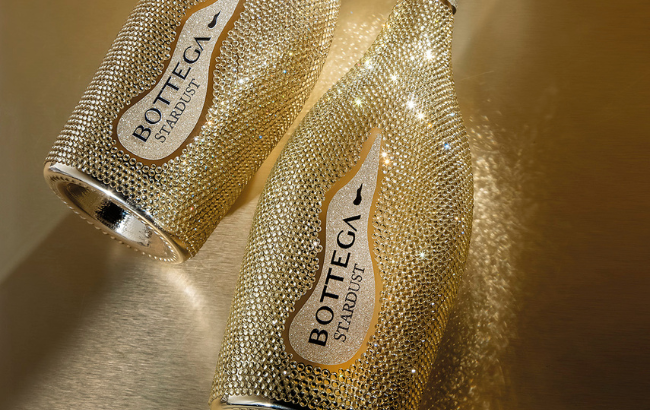Why it’s drought, not heat, that threatens Chilean viticulture
For Chile’s biggest wine producer, Concha y Toro, the challenge of climate change is not rising temperatures, but decreasing amounts of water – and the solution is drastic.

Speaking at an event in London in June this year, Concha y Toro technical director Marcelo Papa was asked for his views on how climate change was affecting the group’s wine production in Chile.
For the country as a whole, he said there were “two big challenges”, the first of which concerned reducing the carbon footprint of wine production, before commenting, “It is an important issue, and a challenge, and we will do it.”
As for the second “challenge”, that relates to weather patterns. Remarking that “every country is facing a different impact,” he said, “For some countries it is a rise in temperature, but for Chile, while the temperature could move up, the [cooling] influence of the Pacific Ocean is so strong [that it mitigates any warming], and we have the Andes Mountains” – which, like the coastal breezes, bring cool air to the vines.
However, he continued, “Chile is a country where we are getting less rain, so the biggest issue in Chile will not be the temperature, but the amount of water.”
While a short-term response to falling levels of precipitation can be to increase the amount of water supplied through irrigation systems to the vines – should there be enough snowmelt – this comes with added expense.
Chile’s central and northerly vineyards are all dependent on irrigation to produce balanced wines in commercial quantities, but this water supply depends on wintertime precipitation, which falls as snow in the Andes, and then feeds agriculture in the country when it melts and fills up the rivers and dams.
Another solution to declining precipitation could be to reduce the vineyard area in drought-struck regions to preserve water for only the best plots, as well as to allow yields to fall – berries with lower levels of irrigation will have less juice, but, as a result, can produce red wines with tough tannins.
But the long-term fix is drastic, and that involves moving wine growing to the wetter, south of Chile – a move being taken by Concha y Toro, according to Papa.
“Over the past 50 years we have been getting less and less rain, so we need to move to the south, where we get more rain, and over the last 20 years, this is what we have been doing,” he said.
By way of example, he recorded that 20 years ago, Concha y Toro’s best-selling wine, Casillero del Diablo Cabernet Sauvignon – with a 2 million case current annual production – had a much larger component of grapes from the increasingly dry Maipo region, with berries from this part of Chile making up around 33% of the blend.
Today, that proportion has fallen to 10%, with the rest from southerly parts of Chile, from the Maule primarily, where rainfall levels are higher, and farming without irrigation is possible – but only if the vines are drought-resistant and they have fully established root systems.
Another 150km further south from Maule, Chile’s Itata Valley has high enough annual rainfall to allow for grape-growing without irrigation, however, after an unusually dry spell at the start of this year, this area was struck by damaging wildfires – fuelled by the large amount of pine forest plantations in this area.
As a result, 450,000 hectares of land were affected, which included 300 hectares of ancient vineyards in Itata – a relatively small amount, but a significant loss for the country’s viticultural heritage.
While Papa acknowledge this recent issue, he said, “Fortunately we don’t get wildfires in Maule, or Rapel.”
As previously reported by db, Chilean wine producers are being forced to move away from fine, cooler-climate wine producing regions such as Casablanca due to there being not enough water to support the number of vineyards in the area.
Partner Content
Further north, Limarí, believed by Papa to be the source of the finest Chardonnay in Chile – and the basis of the group’s outstanding ‘icon’ white wine, Amelia (as well as its top Pinot Noir by the same name) – is limited by water, with no additional plantations currently possible in the region.
Meanwhile, speaking to another top winemaker in Chile, Francisco Baettig, who makes wines for Errázuriz – notably the group’s top brands, Seña, Viñedo Chadwick and Las Pizarras – it is clear that Chile’s water situation is a major concern.
During a meeting with Baettig in London in July, where he was over to preview the 2021 releases of Seña and Viñedo Chadwick, he said “rain continues to be a challenge.”
Referring to the 2021 growing season, he said that “good” winter rainfall in 2020 meant that the “hydric conditions” for the start of 2021 were not a concern, but “generally, today, we see that our winters are quite dry in the central area – in the south we have plenty of rain.”
As a result, in the Maipo and Aconcagua valleys for example, Baettig has had to start irrigating the vines at the end of the winter, or the beginning of the spring, so the plants start the growing season with water in the soil – rather than just in the height of summer, when the vines would normally suffer from drought.
Speaking more generally about the situation, he recalled, “When I was a kid, the average annual rainfall in Santiago was 400mm, but now it is 280mm, and this year, from January to now, we have had 50% less than that.”
While he said that the El Nino effect was supposed to be bringing rain to the southern hemisphere from now or September, he said that the current situation was worrying, pointing out that while there is snow cover in the Andes, it is only at very high elevations, noting that the lower level ski resorts are closed.
“Climate change is a reality,” he said, adding, “It’s crazy”.
Read more
Chile’s winemakers exit Casablanca
Wild fires rip through Chilean wine regions Itata and Bio Bio
300 hectares of old vines lost in Chile fires
Why ‘regenerative viticulture’ is gaining ground among major wine producers
First it was Cab, now Chile has mastered Chardonnay
Related news
Bordeaux 2024 en primeur: St-Estèphe confounds expectations




